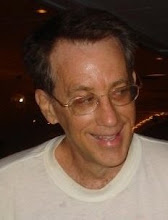What Dwight still doesn't get about free throws and practice
After going 7 for 19 from the free-throw line in a win over the Brooklyn Nets, dropping his percentage for the season below 50 percent, Dwight Howard said, “I just got to do what I do in practice. I make them a lot in practice but I have to transfer those free throws in practice to a game. They will come. I can’t lose the faith.”
As reported by ESPN Nov. 20, "According to a white board hanging in the Lakers' practice facility last week, Howard was 576-of-716 (80 percent) on free throws at practice since Oct. 12."
The first essay I wrote on free-throw shooting, "How to end Shaq's free-throw woes," appeared June 26, 2000 in the online edition of The Sporting News. In it I addressed the common lament of those who, in games, struggle at the stripe: "I make them in practice." I pointed out that "endless reps can create bad habits as easily as good ones. Endless reps also can con a player into thinking he has nuked his nemesis. But it's fool's plutonium, as even a lousy shooter will heat up taking four shots a minute for an hour while an assistant tosses the ball back. I call this a 'false groove.'"
Six years later I elaborated on this theme in an InsideHoops.com essay. Shaq had shot .469 in 2005-06 and was in the midst of a .374 playoff run (68 for 182), which would include a 14 for 48 Finals (.292) that easily could have cost the Heat its first NBA crown:
[T]he fact that Shaq shoots a respectable percentage in practice may have persuaded Riley that there's nothing fundamentally wrong with his technique or delivery. If so, let's count Riley among the many coaches who have yet to figure out that everyone - even Wilt and Big Ben - shoots reasonably well in practice. That's because FTs in practice bear only a superficial resemblance to FTs in games. You shoot the latter one or two at a time in between intense stretches of banging and running, and often with considerable time between trips to the line, even for line-dweller Shaq.
The only FTs in practice that resemble their game counterparts are the first two you shoot. As for the next 48, each becomes progressively easier because you're standing there doing the same thing over and over. It's easy to strike a groove, but it's a false groove. It doesn't help you with your next meaningful FTs, which might come a day or two later mid-way through the first quarter.
The question the Heat should ask is not why Shaq made or missed this or that FT in a recent game. Rather, they should ask: What are the characteristics of Shaq's technique, rhythm and/or routine that explain why, under game conditions, he shoots 42 percent?
That 42 percent figure came from my estimate of what Shaq would have shot in 2005-06 if the NBA hadn't been obsessed with lane violations by defenders that season, which wiped dozens of his misses off the books. Of course, 42 percent isn't much worse than what Howard is shooting this season (.478 through Nov. 27) or last (.491). What he and the Lakers have to ask themselves is this: What are the characteristics of Howard's technique, rhythm and/or routine that explain why, under game conditions, he shoots 48 percent?
Howard is not a klutz. He's graceful, coordinated and ambidextrous. Although I think the NBA would be better off if no one lifted weights, Howard is not dramatically more muscle-bound than any number of other centers and power forwards who shoot in the 70-to-85 percent range. How he shoots explains why he shoots so poorly.
I've written extensively on this matter, starting in 2008 and in subsequent years. I'll continue to do so, just as I will continue to offer my services to the Lakers and/or Howard. What he's doing is not working. He either needs to try something new or, as I've repeatedly recommended, something tried-and-true: his rhythmic rookie routine and stroke that produced a .671 mark and likely would have reached 75-to-80 percent within a few seasons if he hadn't allowed a succession of coaches, beginning at the start of his second season, to make a complete mess of his shot. Laker assistant coach Chuck Person is only the latest.

